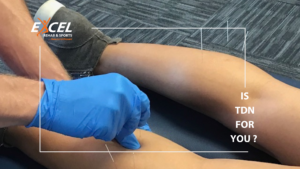This condition is just like it sounds, a finger or thumb that snaps into a bent position and will not bend back! Specifically, trigger finger is inflammation of one of the tendons or cord-like structures on the palm side of the hand that initiates, commonly seen in the thumb or ring finger, to bend and get stuck. The flexor tendon is surrounded by a fluid-filled tube or sheath that allows the tendon to glide more easily. When the tendon is inflamed, it cannot slide easily, making it difficult to bend or straighten the finger and become locked into a bent position.
Am I At Risk? According to the American Academy of Orthopaedic Surgeons, OrthoInfo resources, people with medical conditions such as diabetes and rheumatoid arthritis are likely to develop trigger finger. It can also originate from your hand’s excessive or overuse in pinching or tasks involving small finger and hand movement. Also, if you are showing any of the symptoms below, you could be at risk.
- A tender lump at the base of the finger on the palm side of the hand
- A catching m popping or locking sensation with finger movement
- Pain when you bend or straighten the finger.
Consult a Hand Therapist. According to the American Society for Surgery of the Hand, 73% of patients benefitted from conservative treatment methods in a study done by the Journal of Hand Therapy in 1988. Today, technology and innovation have enabled hand therapists to use many different tools to alleviate pain and reverse the effects of trigger finger. source: handcare.org
Recommendations include the need to limit the amount of time the nodule travels through the pulley system. Using multiple therapeutic techniques like these listed below can help:
- Splinting
- Extrinsic stretching of flexor mass
- Tendon gliding limits nodule-travel through the pulley
- Hands-on tissue mobilization
- Use of instrument assistive devices
Consult Orthopedic Hand Surgeon. A consultation with a specialist will go far in researching other alternatives to your condition if it worsens or does not show improvement. They may suggest, ‘tenolysis’ or ‘trigger finger release surgical procedure.’ along with local injections that may improve tendon gliding.
Image: Reproduced and adapted from JF Sarwark, ed: Essentials of Musculoskeletal Care, ed 4. Rosemont, IL, American Academy of Orthopaedic Surgeons, 2010 | orthoinfo.aaos.org.




